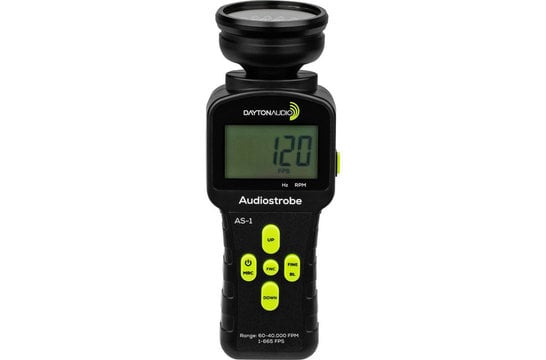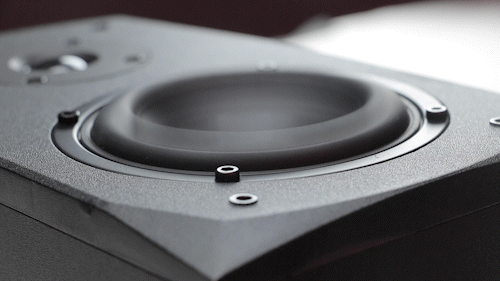




- We ship to United States of America
- Ordered now, shipped on Monday
- Five-year warranty
- 45-day cooling-off period to return
-
Customer rating:















The Dayton Audio AS-1 Audiostrobe was specifically designed with the loudspeaker enthusiast and professionals in mind. The typical frequency response of a loudspeakers contains peaks, nulls and/or resonances which are undesirable. The causes of such irregularities are difficult to see however by synchronizing the flashes per second at or near the frequency of the inputted sine wave to the loudspeaker, the loudspeaker seems motionless or in slow motion. This allows the loudspeaker behavior to be observed even in well-lit rooms thanks to 36 super bright LEDs with total output of 1000 lumens.
Dayton Audio AS-1 Audiostrobe Woofer Analyzer
By utilizing the phenomenon of persistence of vision, the Dayton Audio AS-1 can often help identify the cause of response defects and other useful information about individual drivers as well as complete loudspeaker systems by slowing down a driver's movement to see its performance in motion.
The Dayton Audio AS-1 can help identify the cause of response defects and other useful information of individual drivers. These include, but are not limited to:

Dayton Audio’s AS-1 provides intermittent illumination of an object for visual analysis. By adjusting the frequency of illumination, objects in vibrational or rotational movement can appear stationary or in slow motion. This optical illusion called visual persistence allows for a non-contact inspection and status of moving object surfaces well beyond the ability of the naked eye.
Show more